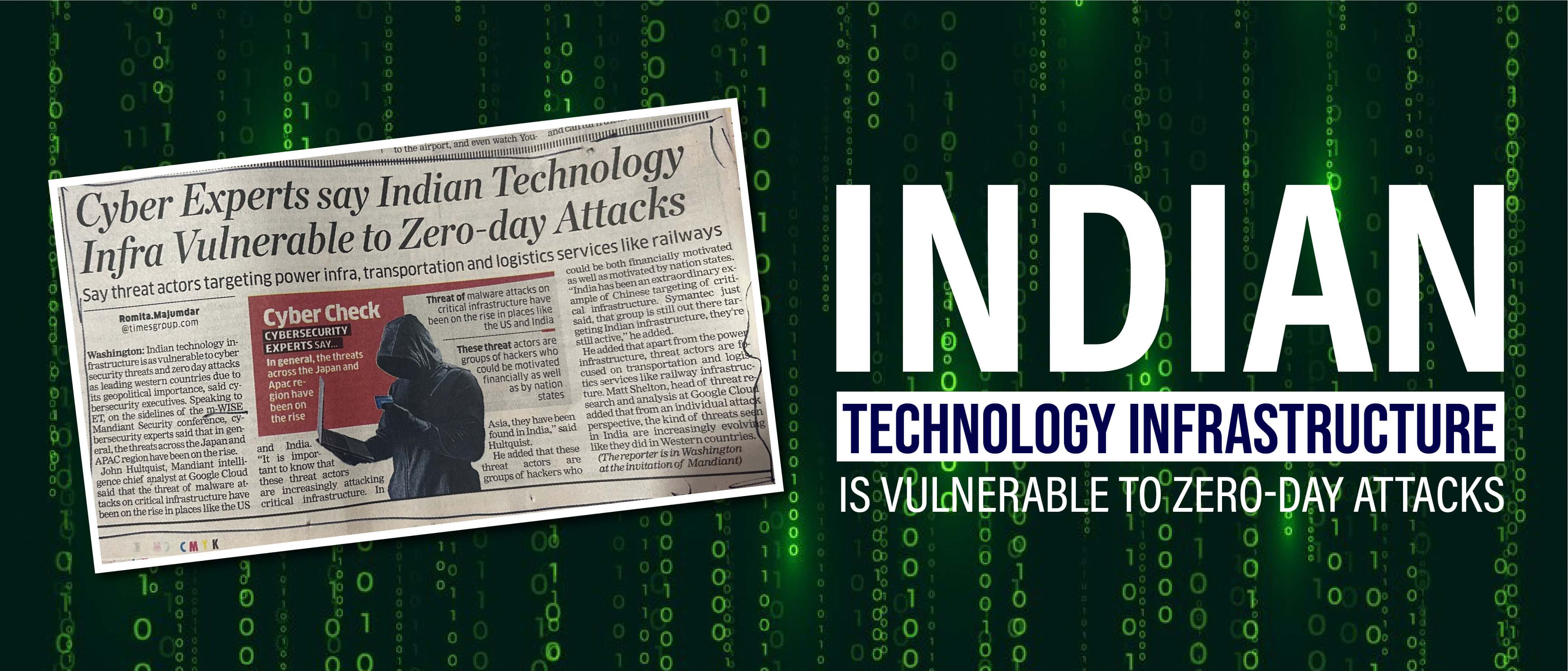Guarding India's Digital Fortress: The Vulnerability to Zero-Day Attacks

Technology is a vital part of our lives in the ever-expanding digital world, influencing how we work, communicate, and even access basic services. India has made enormous progress in technological infrastructure thanks to its thriving IT sector and expanding digital presence
Understanding Zero-Day Attacks:
Before delving into India's specific vulnerabilities, let's grasp what zero-day attacks entail. A zero-day vulnerability is a security flaw or loophole in software, hardware, or a network that is not yet known to the vendor or the public. Cybercriminals exploit these undiscovered weaknesses, often causing substantial damage before a fix or patch becomes available. It's like a thief exploiting a hidden entrance to your home that you didn't even know existed.
Why is India at Risk?
India's susceptibility to zero-day attacks can be attributed to several factors:
- Digital Transformation: As India rapidly adopts digital technologies, from e-governance to online banking, the attack surface for cybercriminals widens.
- Large Population and Data: With over a billion people, India generates an enormous amount of data daily. Protecting this data from attackers is a daunting task.
- Diverse Technology Landscape: India's tech ecosystem comprises various software, platforms, and devices, each with its vulnerabilities, making it challenging to secure them all.
- Limited Cybersecurity Awareness: While awareness is growing, many individuals and organizations in India still lack a robust cybersecurity mindset, leaving them more susceptible to attacks.
Potential Consequences:
The consequences of zero-day attacks on India's technology infrastructure can be severe:
- Data Breaches: Attackers can access sensitive personal and financial data, putting individuals' privacy and financial security at risk.
- Economic Losses: Businesses and government agencies may face financial losses due to disrupted operations, legal liabilities, and reputational damage.
- National Security: Critical infrastructure sectors, such as energy and transportation, could be compromised, posing a threat to national security.
Mitigating the Risk:
India must take proactive measures to reduce its vulnerability to zero-day attacks:
- Invest in Cybersecurity: Allocate resources to build a strong cybersecurity framework, both at the national and organizational levels.
- Collaboration: Foster collaboration between government agencies, private sector companies, and international organizations to share threat intelligence and best practices.
- Education and Training: Increase cybersecurity awareness and training programs for individuals and professionals.
- Regular Updates: Ensure that all software, hardware, and systems are regularly updated with the latest security patches
- Cyber Hygiene: Encourage good cybersecurity practices among individuals, including strong password management and cautious clicking on suspicious links.
Conclusion:
India's journey towards digital empowerment is remarkable, but it also comes with the responsibility of safeguarding the digital fortress from lurking threats. Zero-day attacks are a real and growing danger. India can considerably minimize its susceptibility by making investments in cybersecurity, encouraging collaboration, and promoting cybersecurity education, guaranteeing that its citizens' access to the internet is safe and secure in the future. Protection is not an option in this digital era; it is a necessity.
Contact
For more information on how we can help you secure your data, get you compliant and protect your business, please complete the form below and one of Information security / Cyber Forensic expert and Compliance specialists will respond to you as soon as possible.


